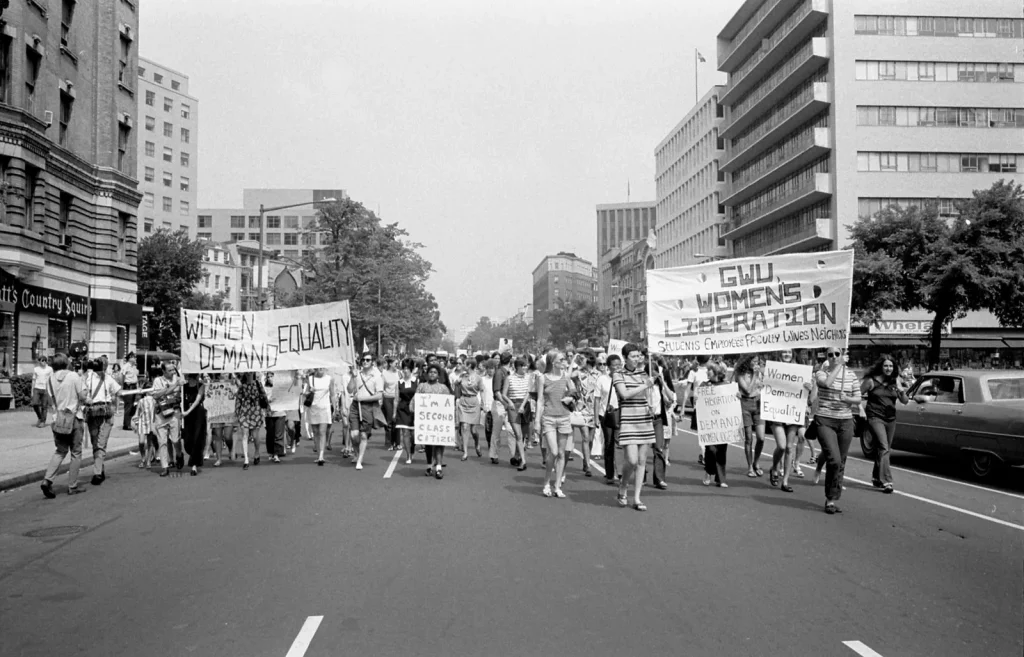According to a study that we have done very summarized, writes sociologist Todd Gitlin in The Sixties: Years of Hope, Days of Rage: “The genies that the Sixties loosed are still abroad in the land, inspiring and unsettling and offending, making trouble. For the civil rights and antiwar and countercultural and women’s and the rest of that decade’s movements forced upon us, central issues for Western civilization—fundamental questions of value, fundamental divides of culture, fundamental debates about the nature of the good life.”
In the 1960s, deep cultural changes were altering the role of women in American society. More females than ever were entering the paid workforce, and this increased the dissatisfaction among women regarding huge gender disparities in pay and advancement and sexual harassment at the workplace. One of the most profound changes was happening in the bedroom. By the end of the Sixties, more than 80 percent of wives of childbearing age were using contraception after the federal government in 1960 approved a birth control pill. This freed many women from unwanted pregnancy and gave them many more choices, and freedom, in their personal lives.

Gradually, Americans came to accept some of the basic goals of the Sixties women rights activists: equal pay for equal work, an end to domestic violence, curtailment of severe limits on women in managerial jobs, an end to sexual harassment, and sharing of responsibility for housework and child rearing.
“The Sixties were an edgy time of transition, change, and confusion, ” observed journalist Kati Marton in Hidden Power: Presidential Marriages That Shaped Our Recent History. “In 1963 Betty Friedan published her book The Feminine Mystique, in which she claimed that ‘the problem that has no name burst like a boil through the image of the happy American housewife.’ The same year, an American woman, the physicist Maria Goepper-Mayer, won a Nobel Prize for the first time. The civil rights and antiwar movements politicized and radicalized a growing number of women bombarded with contradictory expectations and images about work and family. While Lesley Gore’s hit song ‘You Don’t Own Me’ climbed the charts, Leave It to Beaver and Father Knows Best dominated television. One in 5 women with children under 6 and nearly one fourth of women whose children were over 16 held paid jobs in the Sixties. Their pay, however, was 60 percent of the male rate. Though equal pay legislation passed in 1963, that did not solve the problem of low pay in jobs that were classed as female.”
In 1966, the National Organization for Women was formed. In 1968, feminists protested at the Miss America contest in Atlantic City, arguing that the pageant was sexist.
Over time, the feminist trends of the Sixties took hold and over the subsequent decades changed relationships between the genders. “Most young women, at least in the middle class, expected to have access to the same careers and to receive the same compensation as men,” wrote historians Maurice Isserman and Michael Kazin in America Divided: The Civil War of the 1960s. “It was no longer surprising to see women leaders in formerly ‘men’s’ fields like television production (Oprah Winfrey), diplomacy (Secretary of State Madeleine Albright), or the Supreme Court (Justices Sandra Day O’Connor and Ruth Bader Ginsburg). Even conservative Republicans recruited female candidates and urged them to be as aggressive on the stump as men.”
https://www.usnews.com/news/articles/2010/03/12/the-1960s-a-decade-of-change-for-women


